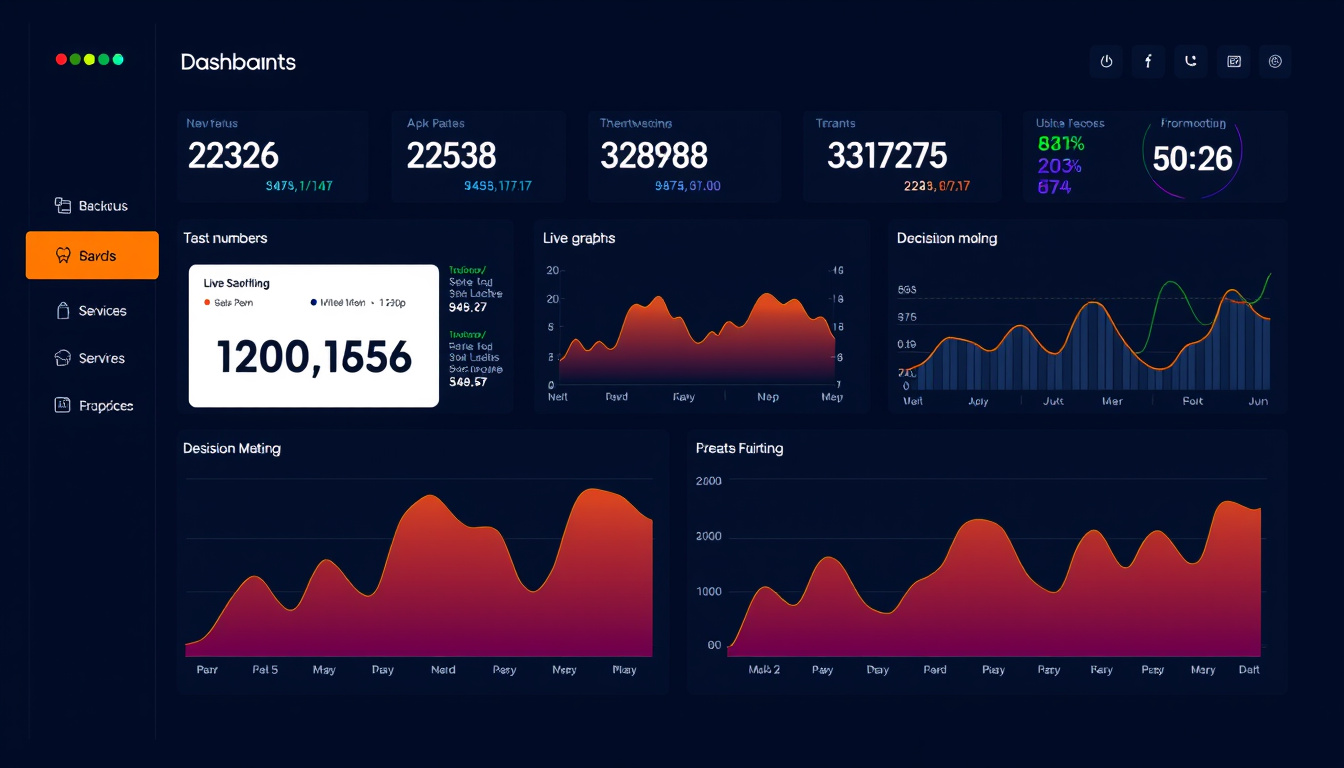Unlocking Insights: The Power of User-Friendly Dashboards for Intuitive Data Visualization
Unlocking Insights: The Power of Easy-to-Use Dashboards for Clear Data Views
In our data-rich age, dashboards transform raw numbers into clear steps for action. Dashboards differ in their design. A good one lets users see key facts fast. It helps them make smart choices. This article shares the main ideas, design tips, and skill steps needed to build dashboards that work well and guide the eye with ease.

What Makes a Dashboard Easy to Use?
A dashboard that is easy to use gives the right facts to the right people in a clear way. It keeps thought work low so users grasp data at once, without strain. The design must let all users—whether new or skilled—see the data right away.
The main parts of such dashboards are:
- Clarity: Arrange data in order. Place words and numbers near each other to show trends.
- Simplicity: Keep the screen clean by showing only key numbers and tools.
- Interaction: Let users click on parts to see more data or change the view.
- Speed: Load the data fast. Quick response builds trust.
- Access: Choose easy-to-read fonts and colors so many users can view the data.
Types of Dashboards and the Users Who Need Them
Design starts with knowing what the dashboard does. Four common types serve different needs:
-
Operational Dashboards
Show live data for fast choices. They work well for teams tracking current events (like active users or sales). -
Strategic Dashboards
Show summary numbers for leaders. They focus on long-run goals like growth or market change. -
Analytical Dashboards
Give tools for looking at data closely. They help find patterns and details. -
Tactical Dashboards
Mix live data with summaries. They help managers track work and adjust plans.
Each type needs a design that fits its users.
Main Design Points for an Easy-to-Use Dashboard
Good design follows basic ideas of visual writing:
- Contrast: Use different colors to mark key numbers.
- Alignment: Place words and visuals in order. This makes the view neat.
- Proximity: Put connected items close together. This cuts down on clutter.
- Repetition: Use the same style again and again. This makes the work seem smooth.
These steps make dashboards that feel clear and guide the eye step by step.
Practical Hints to Build Easy Dashboards
Based on top business tools and user tests, try these ideas:
1. Big, Bold Numbers and Clear Marks
Show main numbers in large fonts. Use symbols and colors (for example, green to show good signs and red to flag warnings). This helps users see value at a glance.
2. Pick the Right Charts
Choose charts or tables that suit the data:
- Bar and line charts show trends over time.
- Tables list exact numbers for detail.
- Key numbers give a quick look at performance in simple figures.
3. Make a Clear Story
Build the dashboard with a start, middle, and end. Begin with a summary of key facts, then let users see more details as needed. One good model is:
- Monitor: Show main numbers.
- Look Closer: Give tools and filters.
- Details: Offer full data for deeper reading.
4. Keep Screens Clean
Do not crowd the view. Limit the screen to 5–6 main blocks. Try to fit the data in one view for ease.
5. Allow Clicks and Custom Views
Give users choices to focus on their needs by adding:
- Filters that pick out needed numbers.
- Options to see more detail in one click.
- Different screen looks for different roles.
6. Stress Fast Load Times
Write clear queries so dashboards show data in seconds. Fast screens keep users happy.
7. Use Space Well
Leave open space around each item. This helps the eye rest and keeps the view clear.
8. Test with Real Users
Let real people try out the dashboard. Their feedback shows which parts work and which need changes.
Common Dashboard Items
An effective dashboard mixes visuals and tools to reveal data steps:
- Charts and Graphs: Tell the story of trends.
- Tables: List numbers for close review.
- Key Numbers: Show main facts along with extra details.
- Filters and Tools: Let users change what they see.
- Navigation: Use clear labels and order so users find what they need.
Conclusion
Easy-to-use dashboards help turn data into clear paths for decision-making. By keeping the view clear, the design simple, the tools interactive, and the load time fast, you build screens that guide the eye and use data well. No matter if the dashboard shows live numbers, big trends, or deep details, keeping the user in focus makes a big difference.
By putting design ideas together with user feedback, your dashboards will not only show data—they will turn it into clear steps for action.
